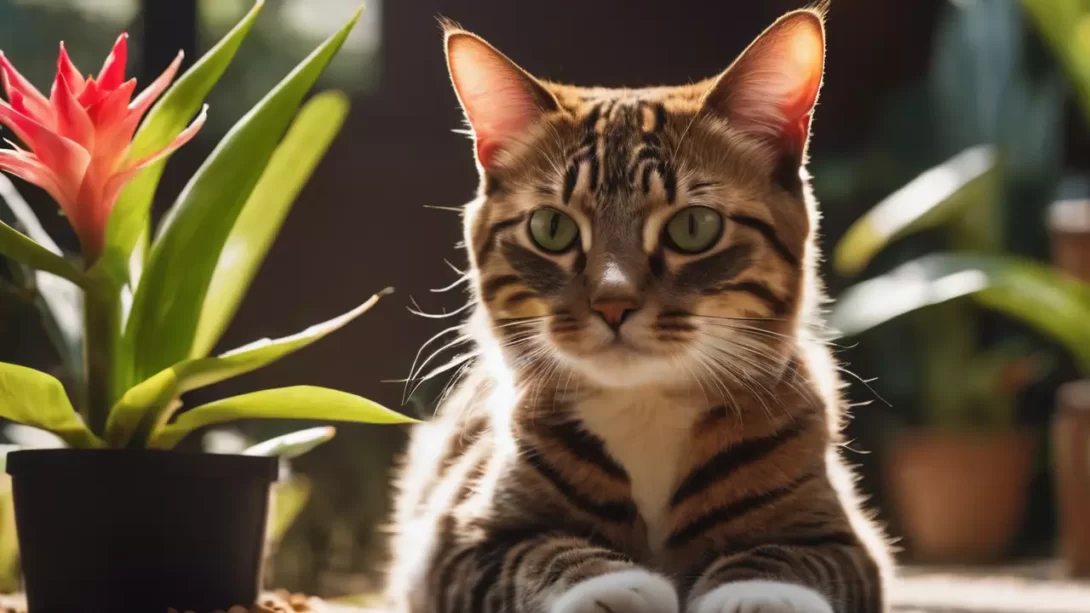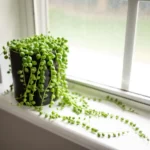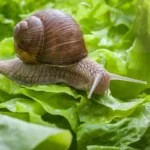Bromeliads are a popular choice for houseplant enthusiasts, thanks to their vibrant colors and unique shapes. However, for cat owners, the safety of these plants is a crucial consideration. Cats are known for their curiosity, often nibbling on household greenery, which raises concerns about potential toxicity. This article delves into whether bromeliads are safe for your feline friends, providing peace of mind for pet-loving plant enthusiasts.
Bromeliads
Bromeliads belong to the Bromeliaceae family, a diverse group of plants known for their striking appearance and resilience. They are characterized by rosettes of stiff, often brightly colored leaves and a central “tank” that collects water. Common varieties found in homes include the Guzmania, Aechmea, and Neoregelia. Each variety offers a unique aesthetic, making them a favorite among indoor gardeners. Despite their exotic looks, understanding their compatibility with household pets is essential.
Toxicity Concerns for Pets
As a pet owner, it’s important to be aware of which houseplants pose a risk to your furry companions. Cats, in particular, have a habit of chewing on plants, which can be dangerous if the plant is toxic. Some common indoor plants, like lilies, aloe vera, and philodendrons, are known to be harmful to cats, causing anything from mild irritation to severe health issues. This context underscores the importance of verifying the safety of bromeliads in a home with cats.
Bromeliads and Cats
Fortunately for cat owners, bromeliads are generally considered non-toxic to cats. This information comes from reputable sources like the American Society for the Prevention of Cruelty to Animals (ASPCA). While bromeliads are not known to contain any harmful toxins that could adversely affect a cat’s health, it’s still wise to monitor your pets. Even non-toxic plants can cause mild digestive upset if ingested in large quantities. Additionally, the stiff leaves of some bromeliad varieties could potentially cause minor physical irritation to a cat’s mouth or digestive tract.
Safety Measures for Cats and Plants
Despite their non-toxic status, it’s advisable to take precautions to ensure both your cats and bromeliads can coexist safely. One effective strategy is to place bromeliads out of reach, perhaps on high shelves or in hanging planters. This not only protects the plant from being damaged but also minimizes the risk of your cat ingesting plant material.
Another approach is to provide your cat with suitable alternatives to chew on, like cat grass or other cat-friendly plants. This can help satisfy their natural urge to nibble on foliage without risking their health or your bromeliads. It’s also helpful to regularly engage your cat with toys and activities, diverting their attention away from your plants.
Alternatives to Bromeliads
If you’re still concerned about introducing bromeliads into a home with cats, there are many cat-safe houseplant alternatives. Spider plants, Boston ferns, and African violets are excellent choices that pose no risk to cats. These plants not only add beauty to your home but also ensure a safe environment for your curious feline. Incorporating these plants can provide the best of both worlds, satisfying your green thumb while keeping your cat’s well-being in mind.
Conclusion
Bromeliads are a safe choice for households with cats, as they are not toxic to felines. However, it’s still important to exercise caution and implement strategies to protect both your pets and your plants. By choosing pet-friendly plants or placing bromeliads out of reach, you can create a harmonious living space that caters to your love of plants without compromising your cat’s safety. Remember, a pet-friendly home is a happy home, and with the right precautions, you can enjoy the beauty of bromeliads and the company of your beloved cat without worry.



